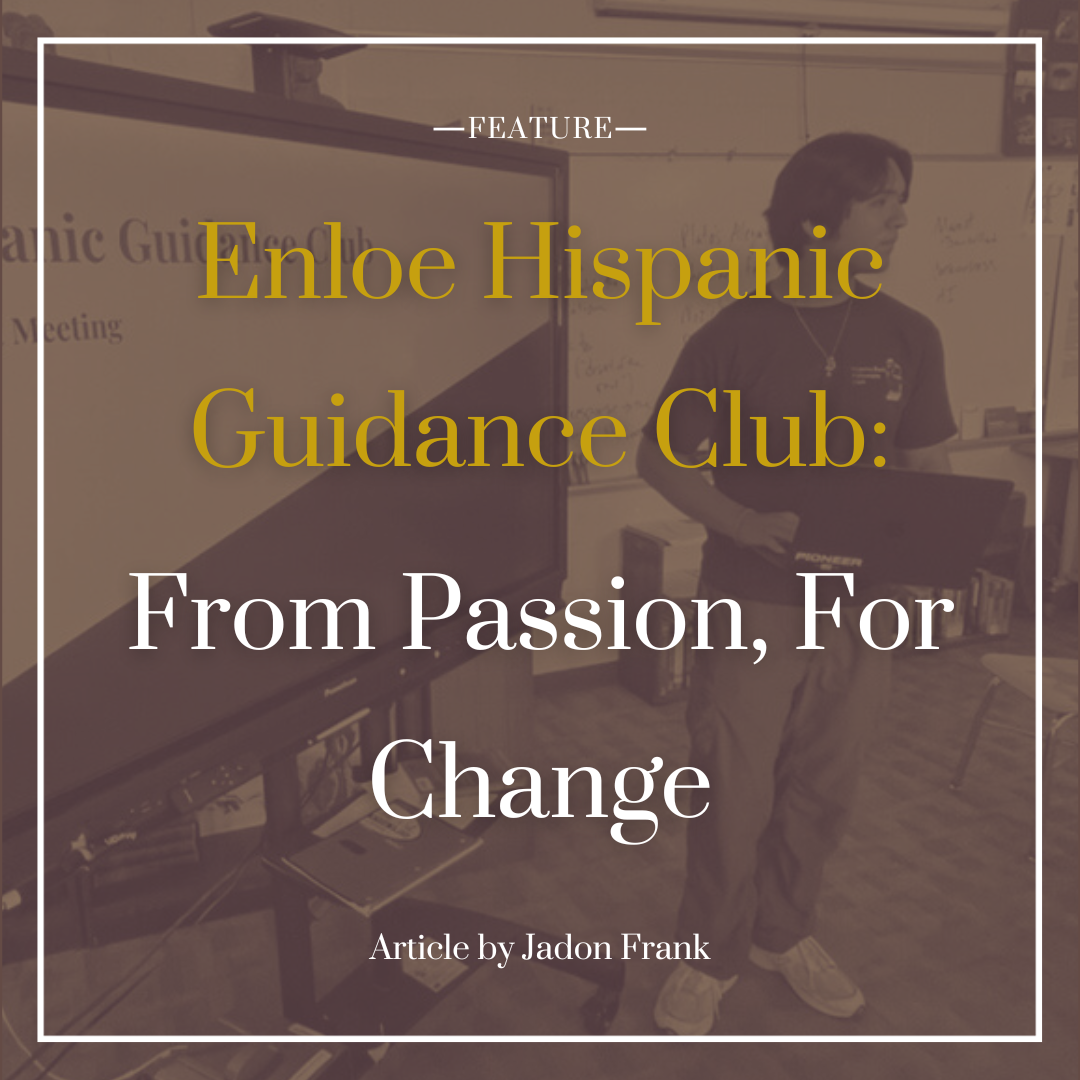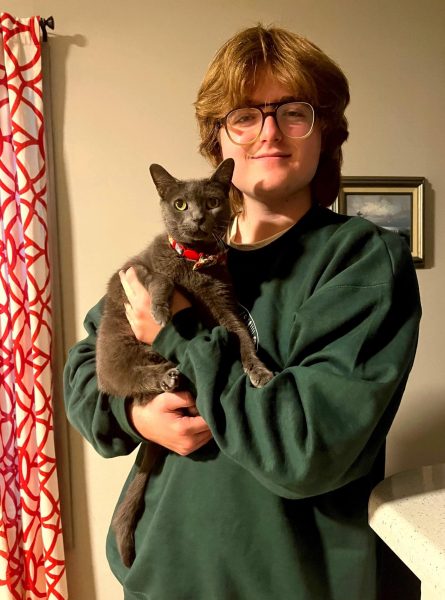One of Enloe’s newest organizations is a student initiative known as the Enloe Hispanic Guidance Club, a club dedicated to providing educational resources and advocacy to the Hispanic community at Enloe. Its bold direction sets it apart from many other clubs, and for founders Ulrik Guerrero-Balbuena and Andrew Yang, it’s been a long-time vision.
Insights from a Hispanic Perspective of Enloe
In his time as an AP/IB student, Guerrero-Balbuena has felt a lack of representation for Hispanic students in his high-level classes. “It’s wild, you know—not even just the looks, but also thinking ‘Hey, I really shouldn’t be the only one here. I should have someone else here that speaks my language.’ I see these people that I want in here in the halls—I see a lot of them, running around to different classes, but the second the bell rings and I’m in my class, they’re just not there. Like, where are they?”
“It became apparent that he had a real passion for helping other people who have had a similar situation to him, or come from a similar ethnic background, to navigate a school system that he has struggled to navigate at certain points,” said Mr. Shuford, the club’s advisor. According to the National Center for Education Statistics, Hispanic students are ranked lowest in academic achievement compared to their non-Hispanic counterparts, and Guerrero-Balbuena wanted to work on opening up the education system in a way he has felt fortunate to access.
“I think it started with Ulrik being, for lack of a better term, angry about the situation,” said Shuford. “So I tried to push him from anger to action, even in just a small way. Starting this club does not solve the problem by any means, but it gives him an outlet, and other students [feeling] like him.”
The Complicated Issue of Access
Guerrero-Balbuena’s passion for academic equity culminated in the creation of the Hispanic Guidance Club, which he describes as a combination of his thoughts on the disadvantages and flaws within his community, and an effort to right some of those wrongs with a focus on education.
However, he recognizes that the sources of these disadvantages are not so simple to pin down. Many Hispanic students face struggles outside the classroom that can hinder their education—for instance, with many school documents written in English, Spanish-speaking parents can face a language barrier that impedes on their ability to support their children academically. Additionally, the American school system is simply different from what is offered in many Spanish-speaking countries. “Sure, you can have standardized testing translated to Spanish,” says Guerrero-Balbuena, “but what is standardized testing?”
One of the details that is often overlooked, he believes, is the lack of motivation and pressure among Hispanic students to enroll in honors and AP-level classes. “What I have felt from personal experience is that we, for many reasons, don’t have as big of an emphasis on education,” Guerrero-Balbuena said. “I see it from even my parents—I love my parents, they would of course want me to get good grades in school—but there’s no way they could ever help me achieve this besides buying my school supplies, patting me on the back, and saying ‘Hey, you got this.’ That’s about it—they don’t know the system.”
Guerrero-Balbuena noticed that many Hispanic students he has known who lacked the cultural emphasis, structures, and financial stability to succeed simply stopped trying. “They were really passionate and all cared deeply about making up for their parents’ sacrifices coming over to the United States. One thing led to another, and they just weren’t able,” he said. “It’s one thing I focus on a lot because I hate seeing it ignored.”
HGC’s Path to Change
Enloe Hispanic Guidance Club seeks to form a team that can perform a role of outreach to Hispanic students and their teachers as a resource of student-led support. “One thing we talked about over the summer, leading up to the school year, was going to ESL (English as a Second Language) classrooms and talking directly to their teachers,” Yang said. “We’ve talked to ESL coordinators and people who used to be ESL coordinators, and they said that [support] would be a really huge help.”
Guerrero-Balbuena and Yang believe that the club will find the most success in seeking out and aiding specific cultural barriers facing Hispanic students, rather than trying to take on an entire system. “Just forming this team, we think it’ll be a lot easier to get people who are motivated to help out to reach these students,” said Guerrero-Balbuena. Importantly, the club invites anyone to join—no Hispanic background is required. “Give it a try,” Guerrero-Balbuena concluded. He’s looking for people with a similar passion and vision to what he originally felt. “All we ask is that you want change.” As Yang put it: “This is a place for anyone to help us tackle a specific issue.”
Get involved by joining their Remind and following their Instagram, both at @enloehgc.








